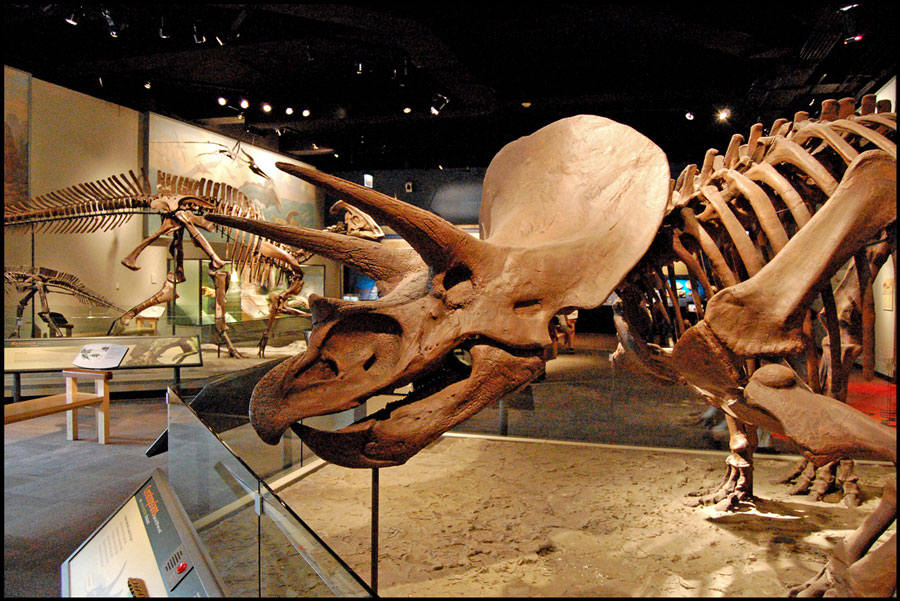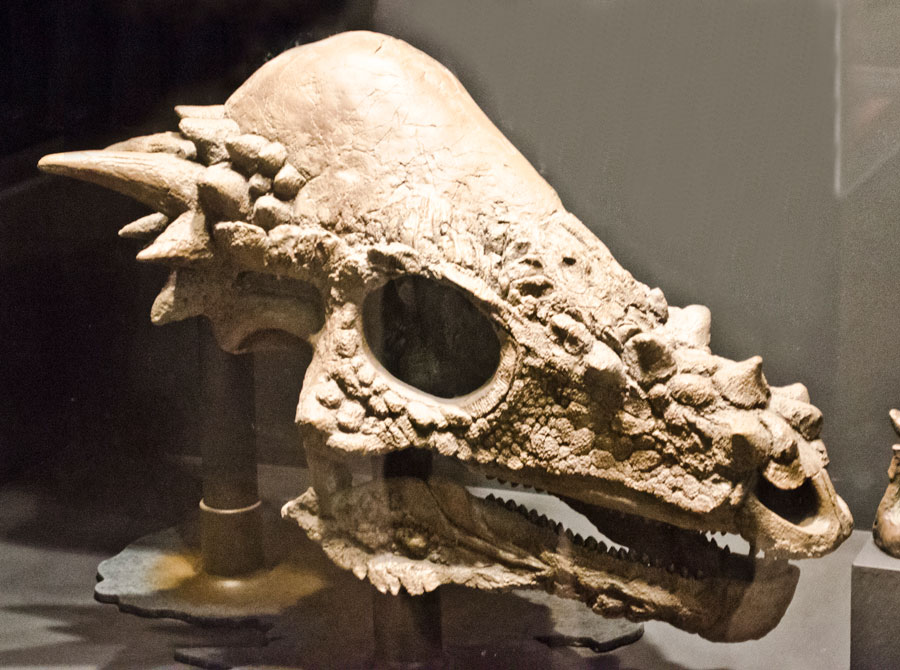KidZone Animals: Dinosaurs
Frilled and Domed Dinosaurs
The marginocephalia are a group of dinosaurs that have special ridge-like bone structures along the base of their skulls. These bone structures come in a wide variety of shapes and sizes, which makes this group of dinosaurs very diverse. The bone structures at the base of the skull may not have just been for things like defense or attacking but also for species recognition, mating, etc.
Dinosaurs belonging to the marginocephalia are herbivores and excellent chewers. Their teeth have good surfaces (like human molars) for grinding up tough materials like twigs and bark. They also have a gap between their beaks and their back teeth When they find a tasty bush (or other food source) they use their beaks to tear the twigs and leaves away, bring the food into the gap in their mouth and manipulate it with their tongues, then they bring it to the back of their mouths to be ground down by their teeth. This is how most herbivores nowadays (like the horse for example) eat too.
The marginocephalia could be split into two main groups: the dome-headed dinosaurs (like the pachycephalosaurus) and the frilled dinosaurs (like the triceratops).
The Dome-Headed Dinosaurs: Like the pacycephalosaurus for example, these dinosaurs walked on two legs and domes of thick bone on the top of their heads. Importantly, the domes did not give these dinosaurs extra space in the skull for bigger brains. Depending on the age and species of the dome-headed dinosaurs, the dome was a different shape and size. Along the base of the dome there were spikes. There is evidence that some domes were used for defense or attack, sort of like how moose ram their antlers together in a rut. Fossils of pacycephalosaurus domes show several areas where the dome has been cracked or damaged and then healed (it is importatnt that they are healed because then palaeontologists know that the damage occured when the dinosaur was still alive). However, attack and defense is not the only possible purpose; dome-headed dinosaurs may have used their domes to look scary against predators or for mating purposes.
The Frilled Dinosaurs: The ceratopsians are dinosaurs with frills and horns. Depending on the species these frills and horns could range in size from very large to relatively small and difficult to identify. Some of the frilled dinosaurs had large horns above the eyes and a small horn above the nose, whereas other frilled dinosaurs had the reverse—small horns about the eyes and a large nasal horn. Initially, palaeontologists interpreted the frills and horns as systems of defense; however, now it is believed that the frilled dinosaurs used their frills and horns for species recognition, mating displays, and possibly to engage in ritualistic or territorial battles with members of their own species (like moose smash antlers in a rut). Ceratopsian fossils are often found in bone beds, which means that there are many different dinosaurs buried in one location. These bone beds had different ages of the same frilled-dinosaur species. This likely means that at least some species of frilled dinosaurs were social animals that travelled in herds.

A triceratops skeleton in a museum.
Photographed by Tom Gill;
used with permission under CC BY-NC-ND 2.0
